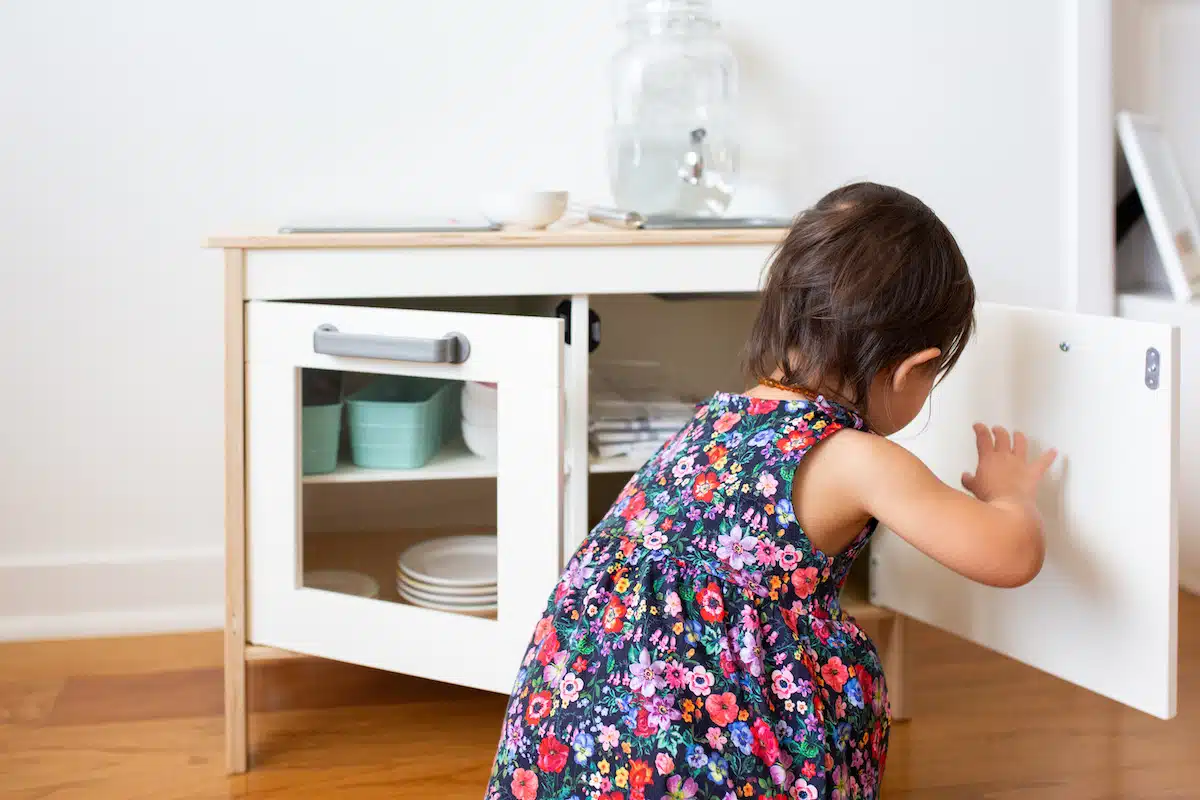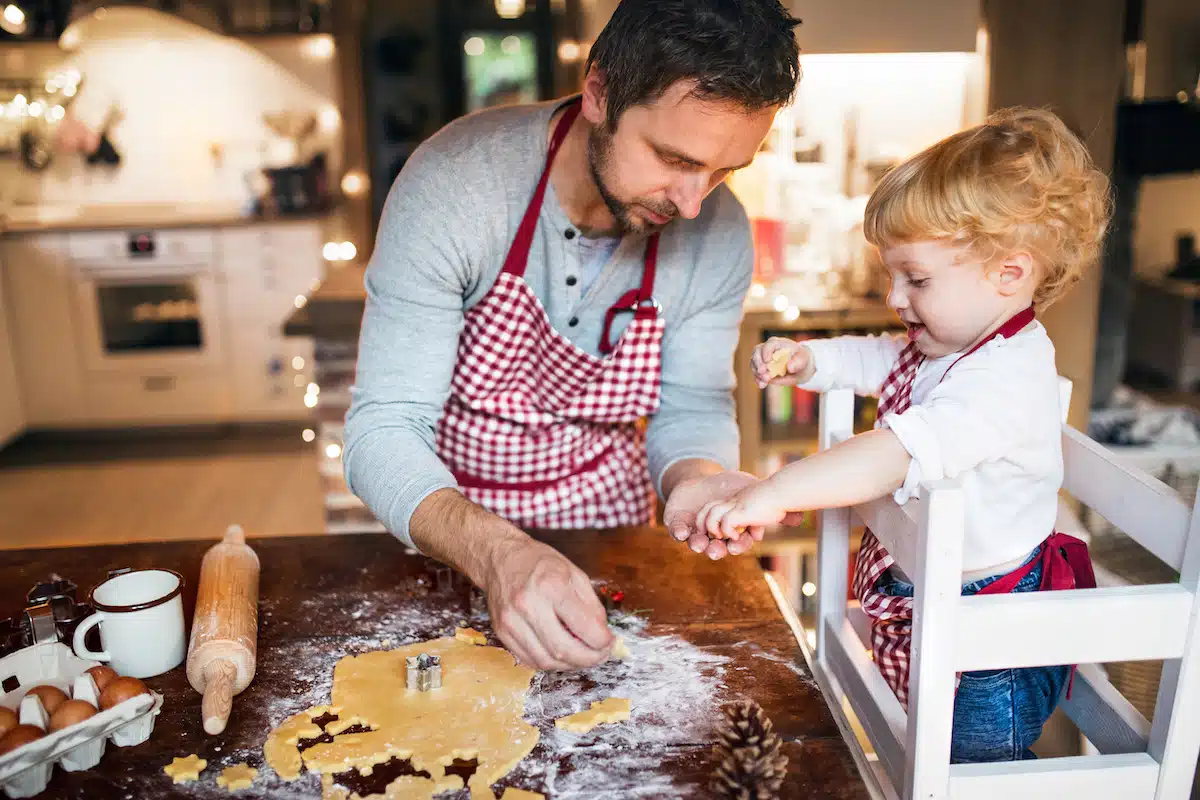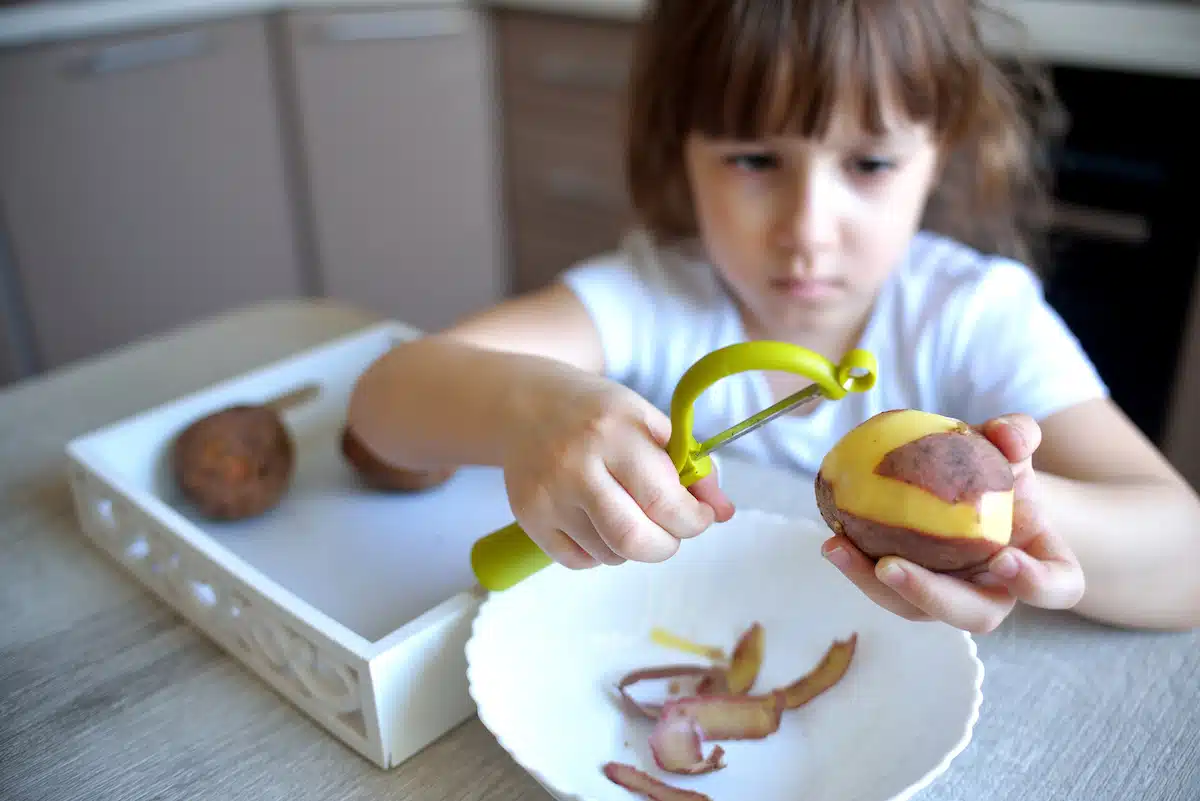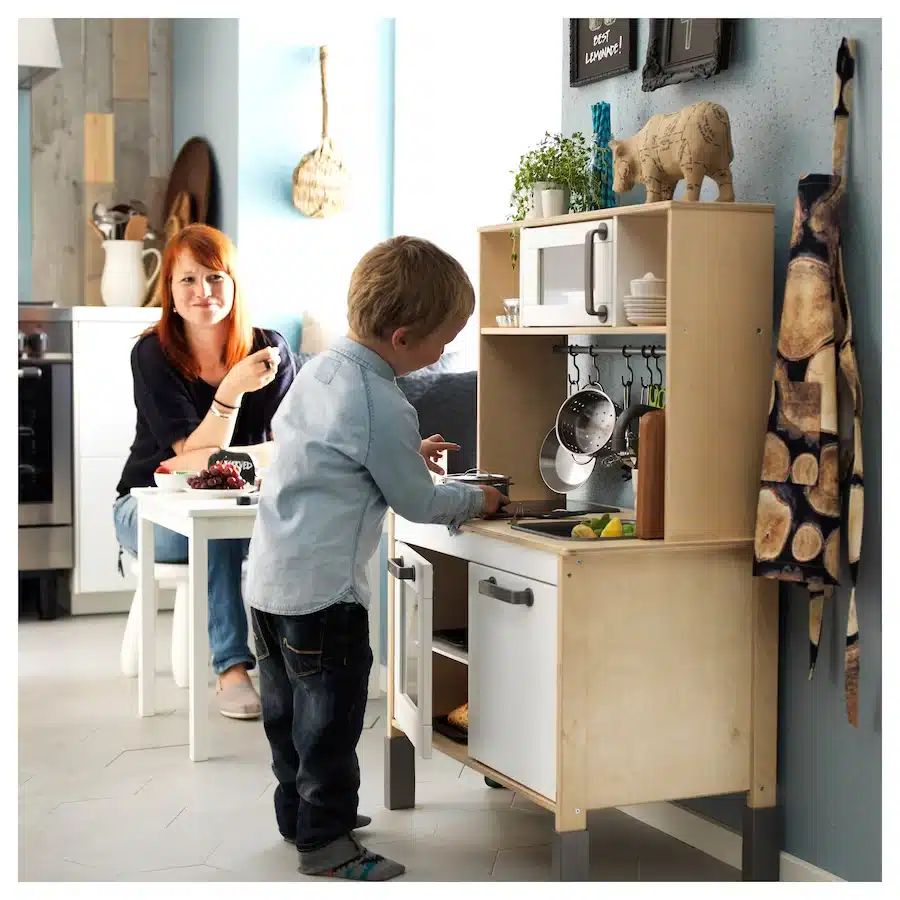A Montessori kitchen is a kitchen space designed specifically for children. Unlike play kitchens, a Montessori kitchen invites the child to participate in real-life activities like preparing food or cleaning. It’s a functional space where children can experiment with cooking and cleaning activities. This environment is created to foster children’s independence, allowing them to move freely, and encourage proper table manners and courteous dining.
Here’s a closer look at what makes a Montessori Kitchen really magical for your child.

More Than Just Pretend Play
This Montessori kitchen goes beyond the simple joy of pretend play— it’s about engaging your child in hands-on food preparation experiences. It includes a natural wood learning tower that encourages them to participate in real cooking activities. Right from chopping soft fruits on a kid-sized cutting board to pouring water from their own water dispenser, kids get to have an authentic kitchen experience.
The purposeful design of a Montessori kitchen provides endless opportunities for cooperative play. Kids can take turns in preparing a pretend meal, washing dishes, or even cleaning up using child-friendly cleaning supplies. Role-playing such activities not only brings loads of fun but also teaches children about the importance of cooperation and sharing responsibilities.
Related Article: Inside a Montessori Classroom
The Highlights of a Montessori Kitchen
- Child-Sized Furniture and Tools: The kitchen includes furniture and tools (like safe, easy-to-use knobs and handles) that are suitable for children, and arranged at their eye level. This ensures children can independently engage with objects in the kitchen.
- Teaching Tools and Materials: The kitchen is equipped with teaching tools and materials that simulate cooking and other kitchen activities. These could be real-life items that are safe for children to use, such as wooden spoons, plastic knives, and small jugs.
- Age-Appropriate Tasks: The kitchen environment invites children to engage in tasks suited to their developmental stage. Toddlers, for example, can stir ingredients or wash fruits, embracing tasks that align with their growing capabilities.
- Cleaning materials: Equipped with cleaning materials, the kitchen allows children to learn about their environment, including cleanliness, following the Montessori method. The method encourages children to clean up after themselves, fostering responsibility.
- Safe & Accessible Environment: The kitchen is designed keeping children’s safety in mind. It’s made sure children can reach utensils, tools and non-hazardous materials. This transformation of the kitchen bolsters children’s independence.

Nurturing Skills Through Play
Playing in a Montessori kitchen isn’t just fun, it’s also an enriching learning experience. When children engage with various tools like a cutting board or a water dispenser, they’re not just pretending to cook or clean; they’re actually honing their fine motor skills.
Related Article: The Top Benefits of a Montessori Education
Take, for instance, the learning tower. This superhero of the Montessori kitchen lifts-up your kids to counter level, allowing them to participate in activities like mixing, measuring, and kneading.
Natural wood elements in this play kitchen not only add aesthetic appeal but also provide a tactile experience. The texture and warmth of natural wood stimulate the child’s senses and make the play more engaging.
Benefits of a Montessori Kitchen
A Montessori Kitchen has a dash of fun, a pinch of lessons, and a whole lot of benefits:
- Fosters Motor Skills: Engaging with the environment in a Montessori Kitchen helps children develop their motor skills.
- Encourages Independent Learning: The Montessori Kitchen inspires children to participate in real-life activities and fosters independence.
- Teaches Table Manners: Practising real-life activities like preparing food or cleaning equips children with table manners and courtesy.
- Nurturing Independence and Practical Life Skills: Children take an active role in meal preparations. This develops their independence and practical life skills.
- Boosts Interaction and Activity-based Learning: The Montessori kitchen is a safe environment for children to explore their curiosity.
- Enhances Creativity: Children have an opportunity to safely and independently express their creativity.

What tools can you find in a Montessori Kitchen?
In a Montessori Kitchen, you’ll find a variety of tools and utensils designed to encourage children’s independence, hands-on learning, and safety. A typical Montessori Kitchen may include:
- Learning Tower: This is a secure stool or platform that allows children to access countertops and sinks independently, further honing their practical life skills.
- Child-Friendly Utensils: These include spoons, forks, and knives fashioned with the safety and usability of children in mind.
- Small Grater, Peeler, and Juicer: Tools like these, which are suitable for children to use, facilitate kids in carrying out tasks like grating, peeling, or juicing fruits and vegetables without struggling.
- Measuring Tools: Equipment such as measuring cups and spoons and pitchers, which are the right size for children, helps them learn and practice precision in measurements.
- Tongs and Tweezers: Children use tools such as tongs and special tweezers to pick up and sort objects, which also helps them improve their motor skills.
- Chopping and Cutting Boards: The kitchen includes appropriately sized chopping and cutting boards for children to use safely.
- Baking Tools: Montessori Kitchens also consist of items for baking like small baking pans, cookie cutters, and whisks to help children partake in baking activities.
Ensure an adult always supervises when children are using these tools to keep them safe. It is also important to actively teach children the correct methods of using and handling different tools.
Related Article: 81 Essential Life Skills to Teach Kids at Every Age

At its core, the Montessori Kitchen holds a philosophy of child-led learning. This approach encourages young hearts and minds to explore independently, fostering a love for lifelong learning. The kitchen becomes a playground, a classroom, a lab for trial and error, and most importantly, a space that says, ‘you can do it’! So, it’s more than just a cooking space—it’s your child’s little corner of wonder, growth, and independence.






